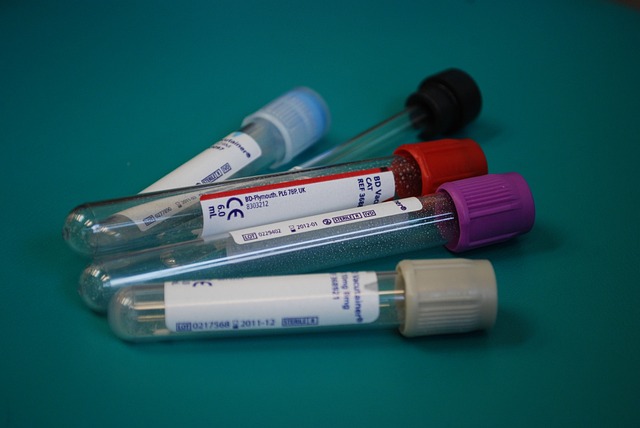In the UK, the Standard Thyroid Blood Test includes ferritin measurement, aiding in diagnosing Iron Deficiency, a common but overlooked health issue. Ferritin levels below 30 mcg/L indicate deficiency, caused by factors like blood loss or dietary deficiencies. Early detection through this simple test is crucial as untreated iron deficiency can lead to severe complications. Consult a healthcare professional for treatment options and regular follow-up tests upon receiving low ferritin results.
“Discover how ferritin level testing is revolutionizing Iron Deficiency diagnosis, especially within the context of the UK’s standard thyroid blood tests. This comprehensive guide delves into the role of ferritin as a key marker for identifying iron deficiency, explaining its significance in comparison to standard thyroid screenings. By interpreting test results, individuals can take informed steps towards management and treatment. Understanding ferritin is now an essential part of navigating your health in the UK.”
- Understanding Ferritin: The Key to Iron Deficiency Diagnosis
- How Standard Thyroid Blood Tests in the UK Incorporate Ferritin Level Checking
- Interpreting Results and Next Steps After a Ferritin Test
Understanding Ferritin: The Key to Iron Deficiency Diagnosis
Ferritin is a protein that plays a crucial role in iron storage and release within the body. It acts as a sort of ‘iron reserve’, with levels in the blood offering valuable insights into an individual’s iron status. In the context of diagnosing Iron Deficiency, Ferritin level testing has become an essential tool for healthcare professionals in the UK. This simple yet powerful method is often included as part of a standard Thyroid Blood Test, providing a quick and accurate assessment of a patient’s iron levels.
By measuring ferritin concentrations, doctors can identify individuals with low iron stores or severe deficiency. Abnormally low ferritin levels are indicative of iron loss or inadequate absorption, which could be caused by various factors including blood loss, dietary deficiencies, or underlying medical conditions. Early detection through Ferritin testing is vital, as Iron Deficiency, if left untreated, can lead to a range of health issues, from fatigue and weakness to more severe complications affecting multiple organs.
How Standard Thyroid Blood Tests in the UK Incorporate Ferritin Level Checking
In the UK, the standard thyroid blood test is a comprehensive assessment that includes measuring ferritin levels as part of its routine analysis. This test is crucial for diagnosing iron deficiency, a common health issue often overlooked despite its prevalence. Ferritin, a protein that stores and transports iron in the body, is a key indicator of iron reserves. By incorporating ferritin level checking into the standard thyroid blood test, healthcare professionals gain valuable insights into a patient’s overall iron status.
The process involves taking a small blood sample, which is then analysed to determine ferritin concentration. Elevated or low ferritin levels can signal iron deficiency or excess, respectively. This simple yet effective method allows for early detection and management of iron-related disorders, ensuring that patients receive appropriate treatment to address any deficiencies.
Interpreting Results and Next Steps After a Ferritin Test
After a ferritin test, interpreting the results is crucial for an accurate diagnosis of iron deficiency. A low ferritin level typically indicates that your body doesn’t have enough stored iron, which can lead to anemia and other health issues. In the UK, a standard thyroid blood test often includes measuring ferritin as part of its routine checks. If your ferritin levels are below 30 micrograms per liter (mcg/L), it suggests potential iron deficiency. However, interpretation should consider other factors too, such as recent blood loss, inflammation, or specific medical conditions that can affect ferritin levels.
Once you have the results, the next step is to consult with a healthcare professional. They will assess your symptoms, medical history, and test outcomes to make an informed diagnosis. If iron deficiency is confirmed, treatment options include dietary changes (such as increasing iron-rich foods), supplements, or in severe cases, injections or intravenous therapy. Regular follow-up tests may be recommended to monitor ferritin levels and ensure effective management of the condition.
Ferritin level testing plays a crucial role in diagnosing Iron Deficiency, as highlighted by its integration into the standard Thyroid Blood Tests conducted in the UK. By understanding ferritin as the key indicator of iron storage, interpreting test results accurately can guide appropriate treatment and management strategies. Whether through elevated or depressed ferritin levels, these tests enable healthcare professionals to navigate the diagnosis effectively, ensuring folks receive the necessary care for their Iron Deficiency.
